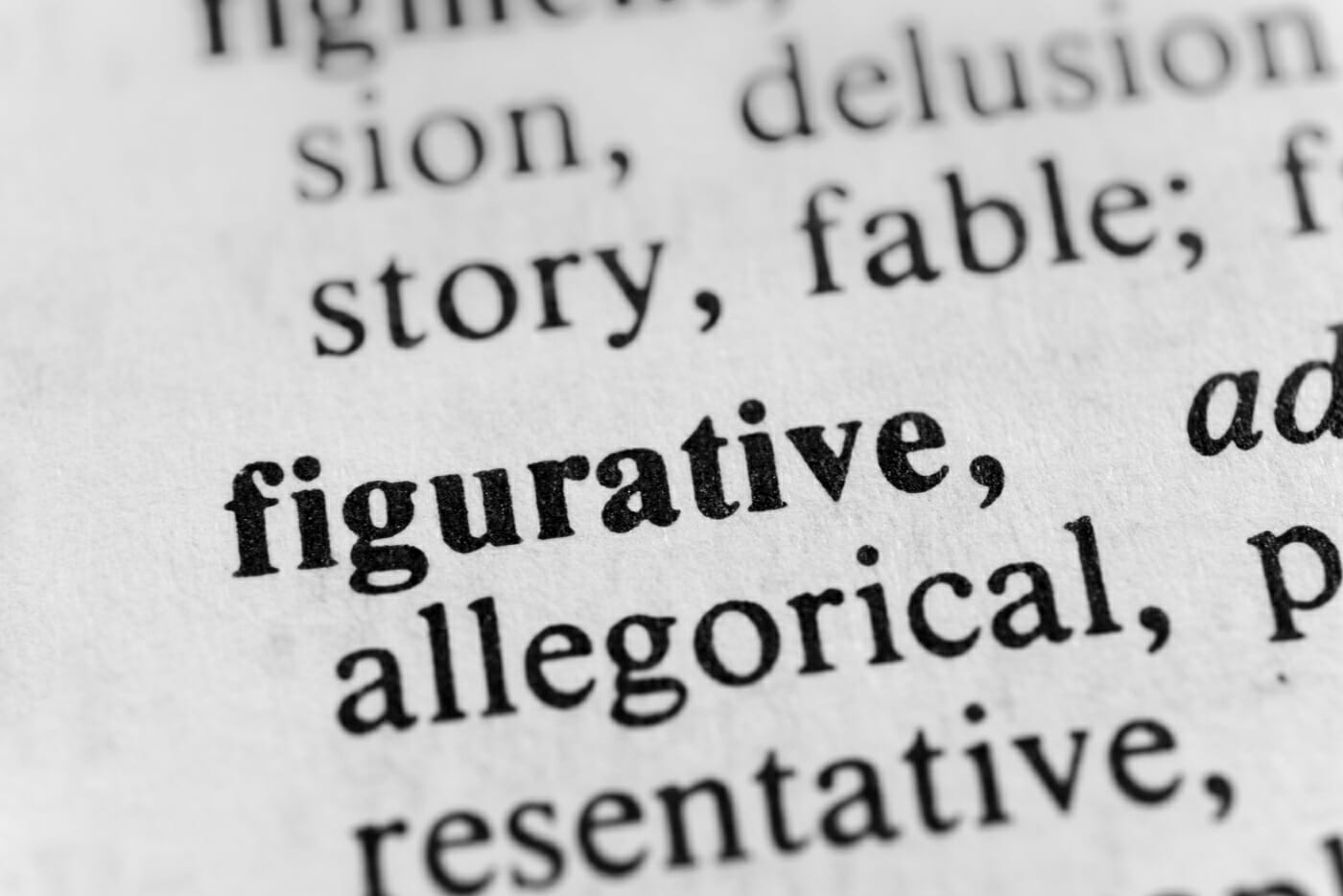Figurative Language
A language used to convey a complicated meaning, colorful writing, clarity, or evocative comparison
What is Figurative Language?
Figurative language refers to the use of words in a way that deviates from the conventional order and meaning in order to convey a complicated meaning, colorful writing, clarity, or evocative comparison. It uses an ordinary sentence to refer to something without directly stating it.
Understanding figurative language is an important part of reading the Management Discussion and Analysis (MD&A), where management may use a metaphor to help explain complicated concepts or directions that the company is taking.

Fiction writers use figurative language to engage their audience using a more creative tone that provokes thinking and sometimes humor. It makes fiction writing more interesting and dramatic than the literal language that uses words to refer to statements of fact.
Types of Figurative Language
There are several types of figurative language that are used in modern writing. They include:
1. Simile
A simile is a figure of speech that compares two unlike things and uses the words “like” or “as” and they are commonly used in everyday communication. A simile is used with the aim of sparking an interesting connection in the reader’s mind.
An example of a simile is, “The cat sat in the chair like a king overlooking his kingdom.” The cat’s sitting posture is compared to that of a king who relaxes in a special chair that is reserved for him and not any other person in the kingdom.
Other examples of similes include:
- The boy was as brave as a lion in the jungle.
- The assistant was as busy as a bee when she was preparing the podium for the presidential address.
- The new teacher is as tall as a giraffe.
- The new neighbor is as curious as a cat; nothing escapes her attention.
2. Metaphor
A metaphor is a statement that compares two things that are not alike. Unlike similes, metaphors do not use the words “like” or “as.” Such statements only make sense when the reader understands the connection between the two things being compared.
An example of a popular metaphor is “Time is money.” The statement compares time and money, and it does not literally mean that the amount of time you have equals the money that you have. Instead, it means that time is a valuable resource, and it should be used effectively to earn money. Any time wasted means that a person loses the chance to make more money.
Other examples of metaphors include:
- The warrior has a heart of stone.
- Love is a battlefield.
- Baby, you are my sunshine.
- Chaos is a friend of the legislator.
- I am drowning in a sea of grief.
- My roommate is going through a rollercoaster of emotions.
3. Hyperbole
Hyperbole is an exaggeration that is created to emphasize a point or bring out a sense of humor. It is often used in everyday conversations without the speaker noticing it. The exaggeration is so outrageous that no one would believe that it is true. It is used to add depth and color to a statement.
An example of hyperbole is, “I would die for you.” The sentence does not necessarily mean that one person is literally willing to die for the other, but it used to exaggerate the amount of love that one person has for another person. Death is only used to show the extent of affection.
Other examples of hyperbole:
- I have told you a million times to wash the dishes.
- You are so slender that the wind can carry you away.
- The afternoon is so bright that the sun would have to wear sunglasses.
- You snore like a freight train.
4. Personification
Personification is the attribution of human characteristics to non-living objects. Using personification affects the way readers imagine things, and it sparks an interest in the subject.
An example of personification is, “The sun greeted me when I woke up in the morning.” The sun is a non-human object but has been given human characteristics since greetings can only be performed by living creatures.
Other examples of personification include:
- April is the cruelest month of the year.
- The radio stared at me.
- The car brakes screamed all through the journey.
- The car stopped with a groaning complaint.
5. Synecdoche
Synecdoche is a type of figurative language that uses one part to refer to the whole, or the whole to refer to the part. For example, a set of wheels can be used to refer to a vehicle and a suit to refer to a businessman. When referring to a car as a set of wheels, the wheels are only a part of the car and not the whole thing. Similarly, a typical businessman wears a suit alongside other accessories such as a watch and a briefcase.
Other examples of synecdoche include:
- Bread can be used to refer to food in general or money.
- Head can refer to counting cattle or people.
- Hired hands can be used to refer to workers.
6. Onomatopoeia
Onomatopoeia is a language that names something or an action by imitating the sound associated with it. They add some reality to the writing. Examples of onomatopoeia include:
- The fireplace heater hissed and cracked.
- The truck engine roared as it climbed the hill.
- The alarm clock buzzed at the time I was going to the bathroom.
More Resources
Thank you for reading CFI’s guide to Figurative Language. To keep learning and developing your knowledge, we highly recommend the additional CFI resources below: